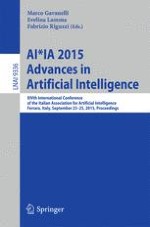2015 | Buch
AI*IA 2015 Advances in Artificial Intelligence
XIVth International Conference of the Italian Association for Artificial Intelligence, Ferrara, Italy, September 23-25, 2015, Proceedings
herausgegeben von: Marco Gavanelli, Evelina Lamma, Fabrizio Riguzzi
Verlag: Springer International Publishing
Buchreihe : Lecture Notes in Computer Science
